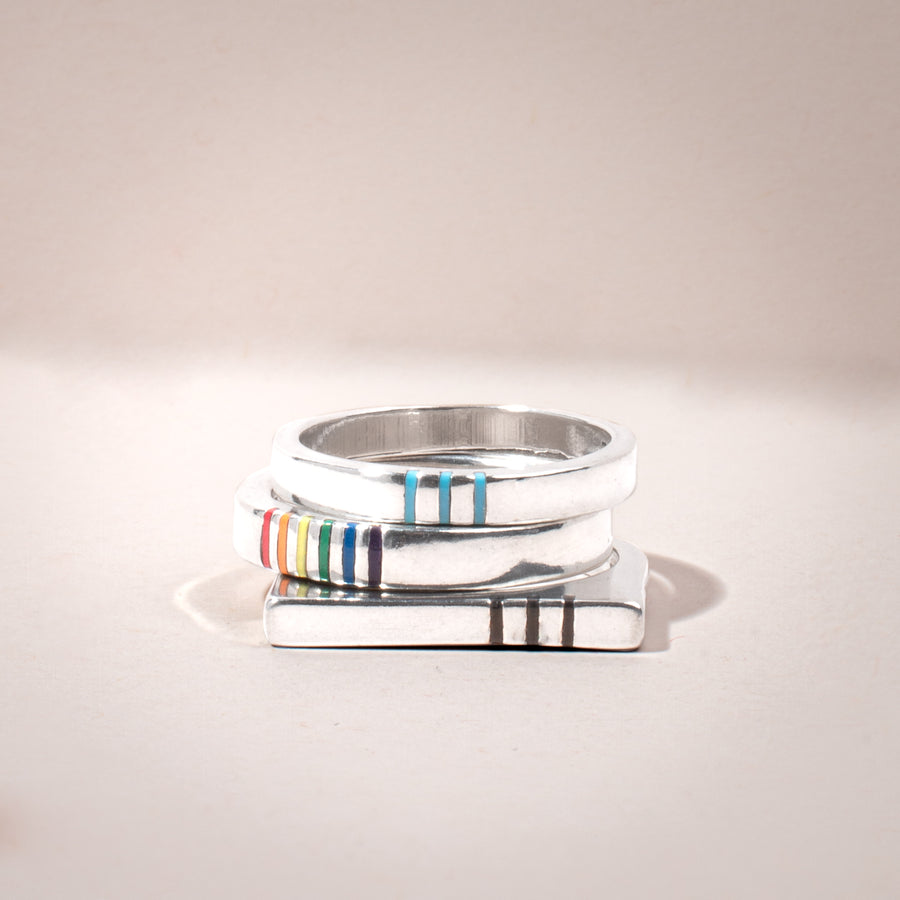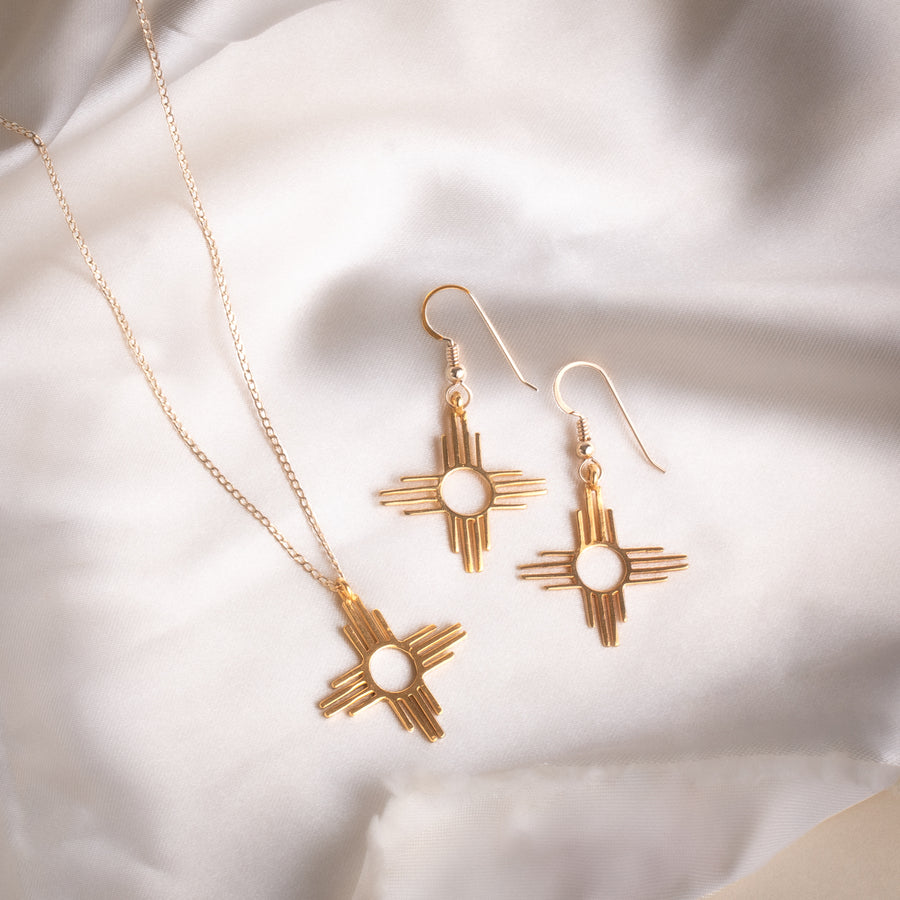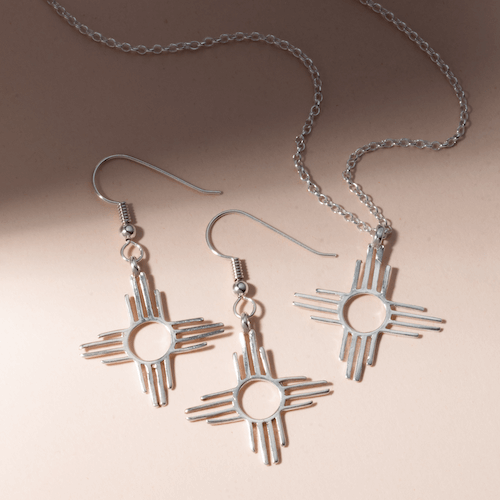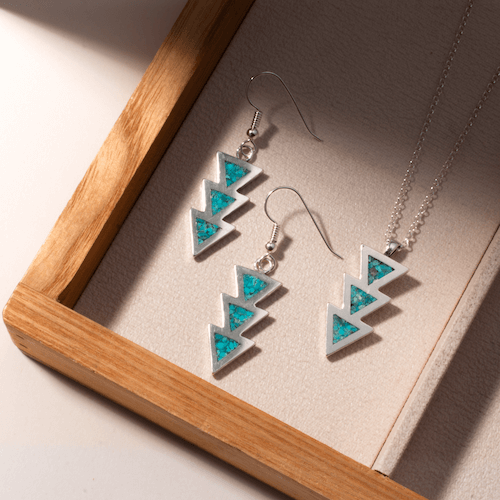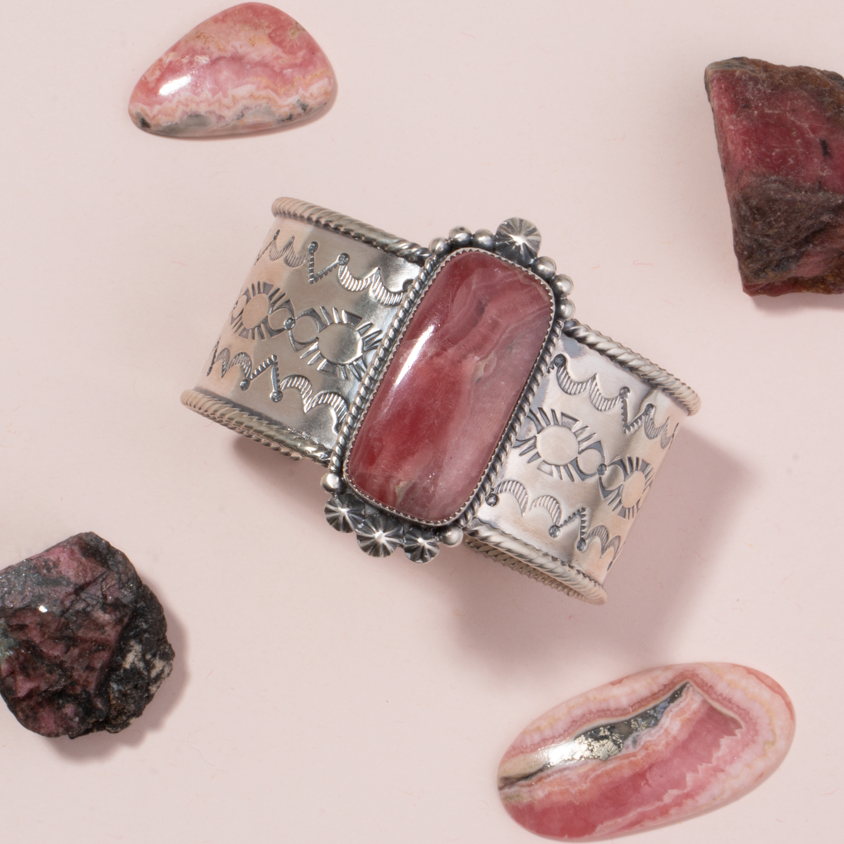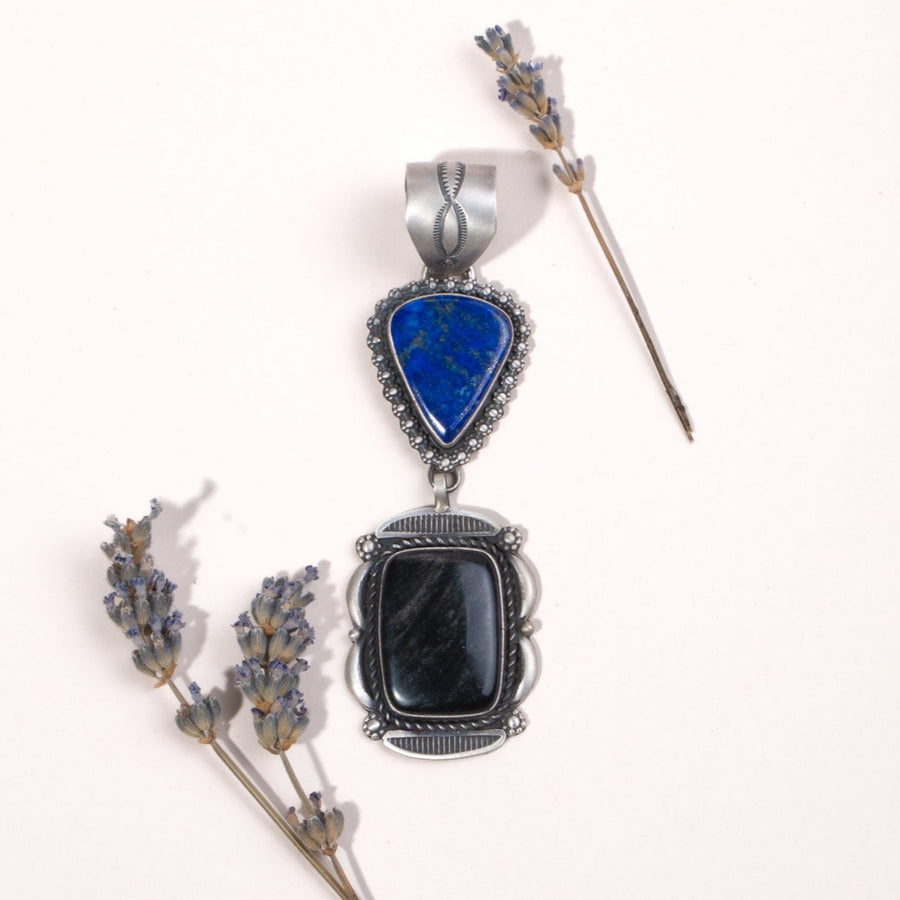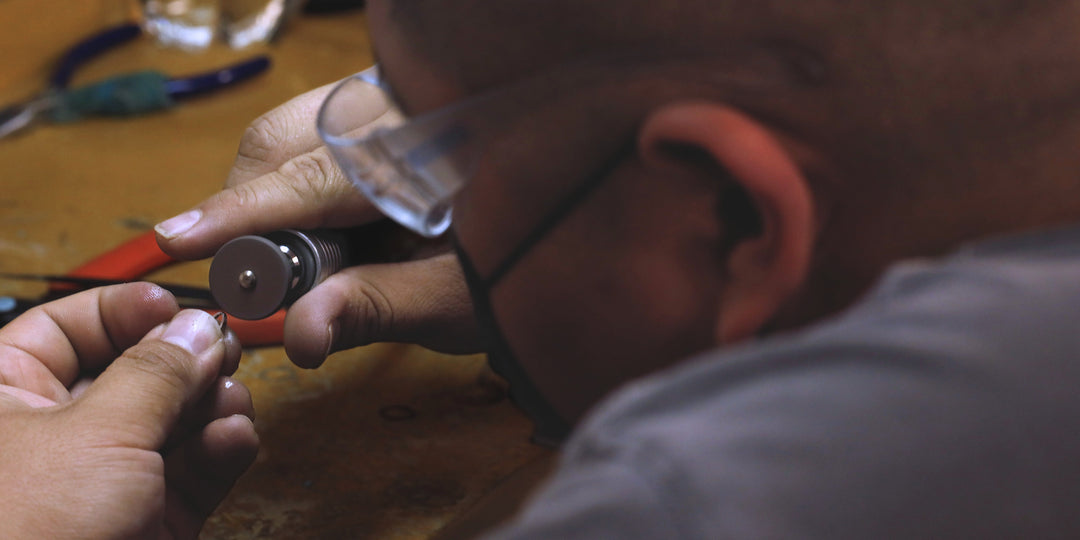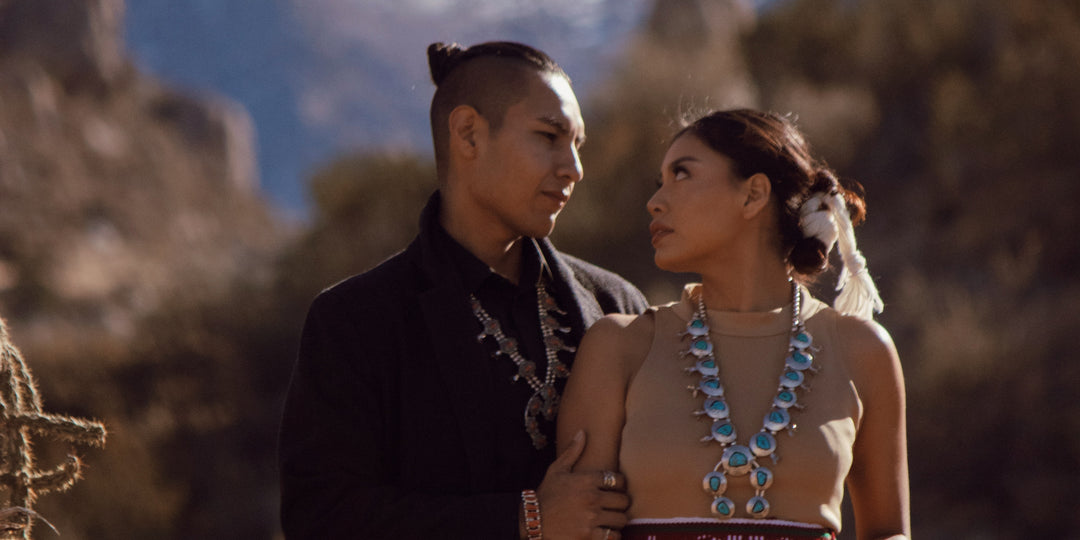Frequently Asked Turquoise Questions
How is Turquoise Formed?
Naturally occurring minerals are separated into two categories: primary and secondary. Turquoise is a secondary mineral. Unlike base elements such as copper or silver, it forms over time. Two natural processes and reactions occur in order to form turquoise. Weathering sets the stage as water passes through rocks and minerals dissolve. Over time, these minerals accumulate in the porous rock surfaces to form turquoise deposits. Secondly, other minerals undergo oxidation and contribute to the unique features of each turquoise formation.
How does Turquoise Form in Different Colors?
The various shades of turquoise depend on what minerals are present at the site where the turquoise is formed. As a secondary mineral, turquoise can be affected by a range of factors. Therefore, every piece of turquoise is different and special. For example, the presence of copper at the formation site will create a more vibrant blue. However, aluminum may create a greener shade of turquoise. These types of variations are a part of what make turquoise so unique and special.

What Causes the Dark Markings on Turquoise?
In addition to the range of colors, different pieces of turquoise will also have different markings. This is another way in which each piece is different and special. These markings are portions of the rock from which the turquoise formed. When the turquoise is cut away, the matrix of the other rock remains within the stone. This creates a spider veining type of effect that is natural, beautiful and adds character to the stone. Different types of rock create different colored markings. For example, black lines are usually iron pyrite, while brown markings are often iron oxide.

How Hard is Turquoise?
Once again, no two pieces of turquoise are exactly the same. In regard to its hardness and strength, turquoise is different depending on where it has been formed. The turquoise closest the surface of the Earth, is the hardest. It has an opportunity to “dry”, if you will. However, turquoise deeper beneath the surface is softer and similar to chalk. This type of turquoise must be treated if it is to be used for jewelry or other purposes. It is much too porous otherwise. Therefore, most of the jewelry that you might wear, is likely made of the turquoise found closer to the surface of the Earth’s crust.

How Should I Care for My Turquoise Jewelry?
Turquoise should be treated with care. Do not clean it with commercial cleaners. Wash it with soap and warm water. Be careful with it, as turquoise can be fragile, even when treated. Try to keep it away from perfumes, hair products, etc. and make sure it isn’t stored with harder gems or stones which may scratch or damage the turquoise stone. Try storing it by itself, or at least with other softer stones. It might be wise to have a special section of your jewelry box devoted to your turquoise.

How Did Turquoise get its Name?
It means “Turkish Stone” in French. It was given this name because turquoise was often traded in Turkish bazaars. Though turquoise mining originated in ancient Persia (modern day Iran), it was associated by Renaissance Europe with the Ottoman Turks. Thus, the beautiful and valuable stone was given the name “pierre turquoise” (Turkish stone). The term “turquoise” has now evolved to also denote a shade of blue in the English language. Many people refer to the shade of blue that is typical of the stone, as a color when painting, designing or dressing. It has come to have a broader meaning than just the name of the stone.

Is Turquoise a Birthstone?
Yes it is! Birthstones can be associated both with astrological signs and birth months. Turquoise is a traditional birthstone for Sagittarians and all people born in the month of December. Rings, bracelets, necklaces and other jewelry and trinkets are often made from birthstones so that people can symbolically represent their birth month or zodiac sign. People born around this time of year love turquoise for many reasons. Turquoise has a natural, rugged look that many people really enjoy. It looks great with casual clothing and is vibrant and bold enough to really brighten up a dark or neutral outfit.

